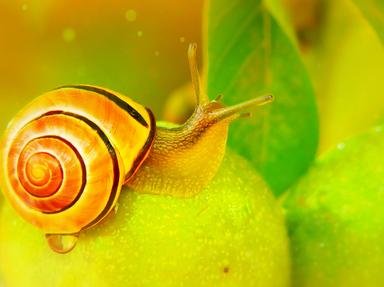Quiz Answer Key and Fun Facts
1. If you hear my name, you may think that I'm a one-eyed giant. Well, you'd be half right. In fact, I rarely exceed 5 mm. I dwell in several bodies of freshwater around the world. What am I?
2. Although I am called medusa, I have no snakes for hair, nor will my glare turn you to stone. Instead, I am what some may call a jellyfish. What is the name of this jelly-like substance of which I am made?
3. Upon hearing our name, you may think that we are the dryads, nereids, oreads and naiads of Greek mythology. However, in this instance we are actually young crickets. What are we?
4. Although called the Hercules beetle, you won't find me battling mythological beasts or ascending to the top of Mount Olympus in Greece. Instead, where will you find me?
5. Despite being called a dragonfly, you won't see me breathing fire or guarding any castles. However, you could say that I am just as well known around the world as my namesake. Which country is so fond of me that they sometimes call themselves the "Land of the Dragonflies"?
6. With a name like blue morpho, you may associate me with a shape shifting mythological figure. Furthermore, my two species' names may lead you to believe that I am one of two figures from the Trojan war. But I am none of these. What am I?
7. As scorpions and spiders, we are often associated with a woman of Greek myth who angered Athena - her name was Arachne. To what does Arachne lend her name?
8. I'm bigger than most cockroaches, as my name suggests. My name also links me with a term used to describe Orion and Antaeus - characters in Greek mythology. What is my name?
9. If I were to tell you that I am a hydra, you may picture a many-headed serpent from Greek mythology. However, I am actually a cylindrical fresh-water animal with stinging tentacles, similar to those of a jellyfish. Which venomous cells provide this "sting"?
10. When you hear my name, you may expect me to be able to hold up the heavens on my shoulders. However, I'm actually a horned beetle common to Malaysia which rarely exceeds 130 mm. What is my name?
Source: Author
doublemm
This quiz was reviewed by FunTrivia editor
crisw before going online.
Any errors found in FunTrivia content are routinely corrected through our feedback system.

